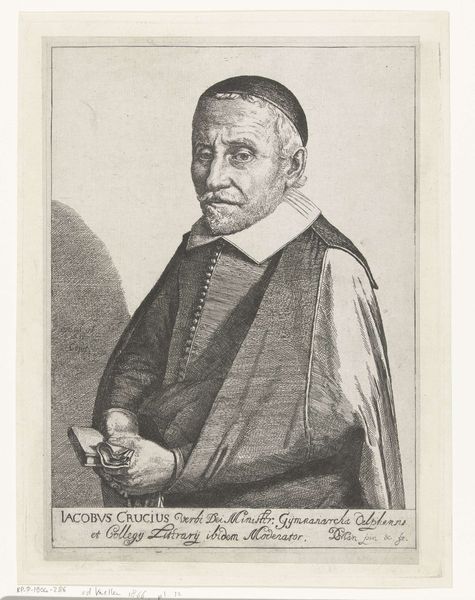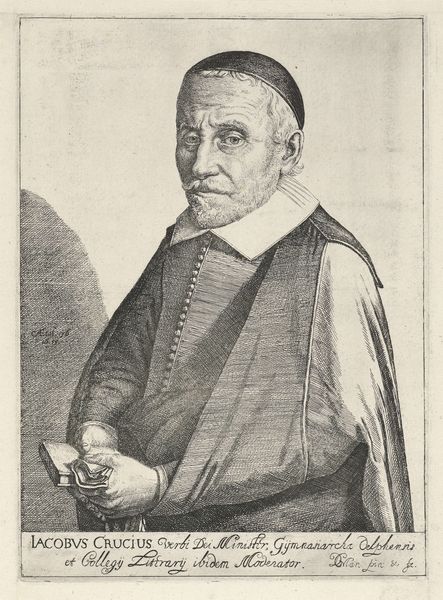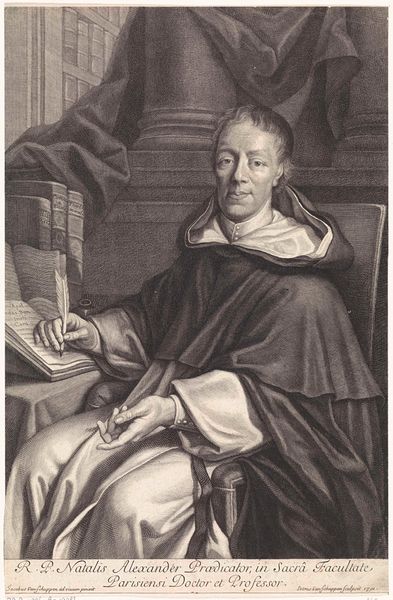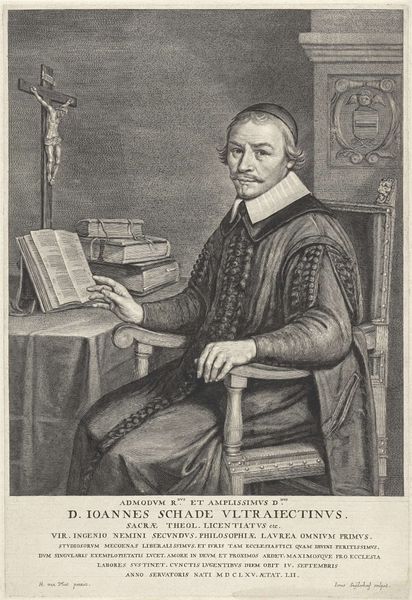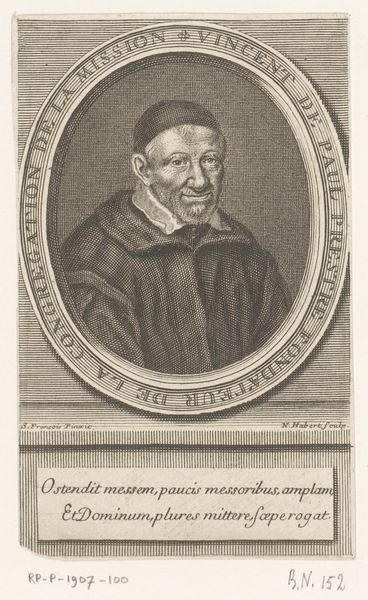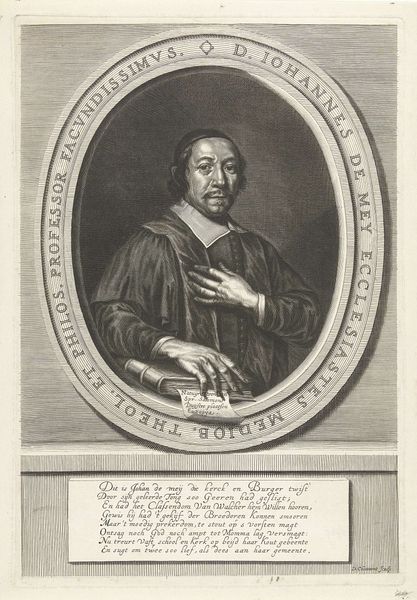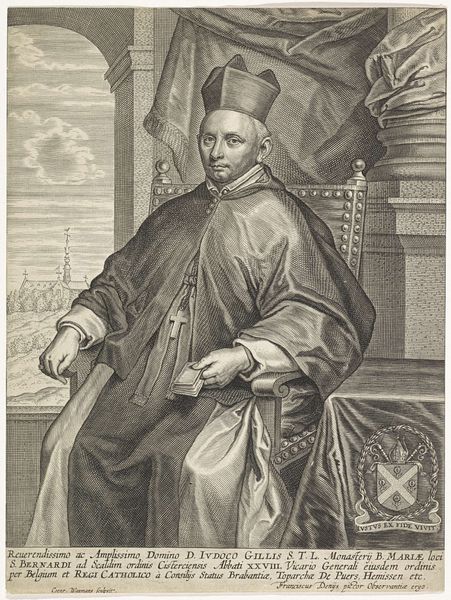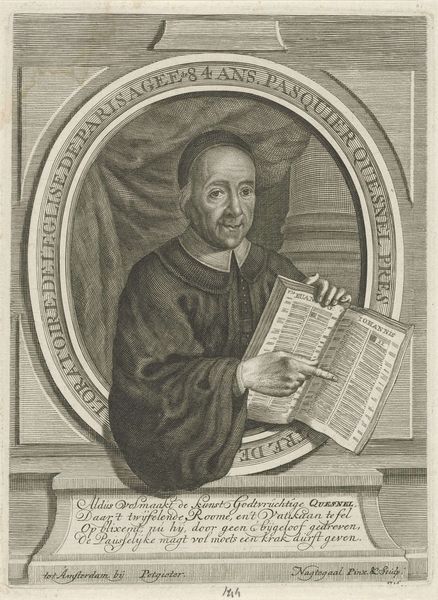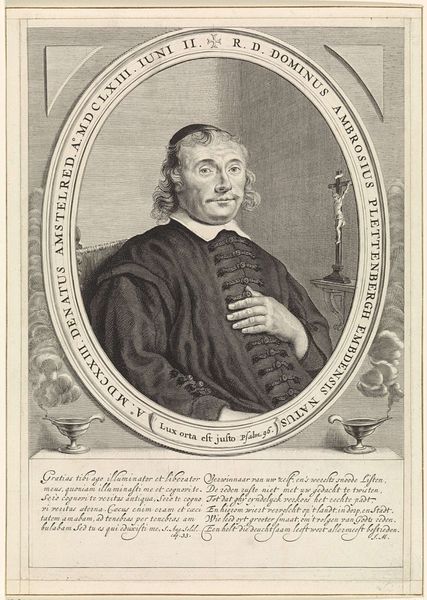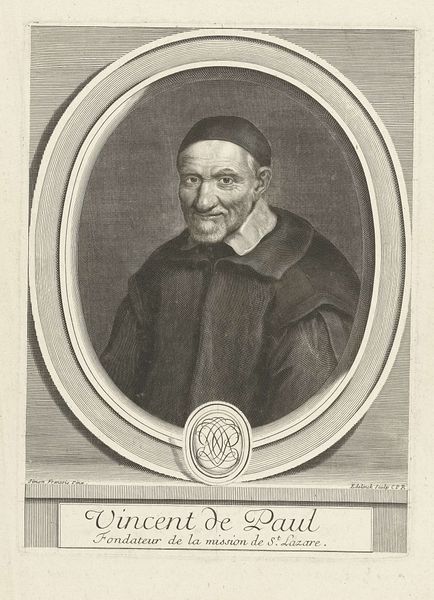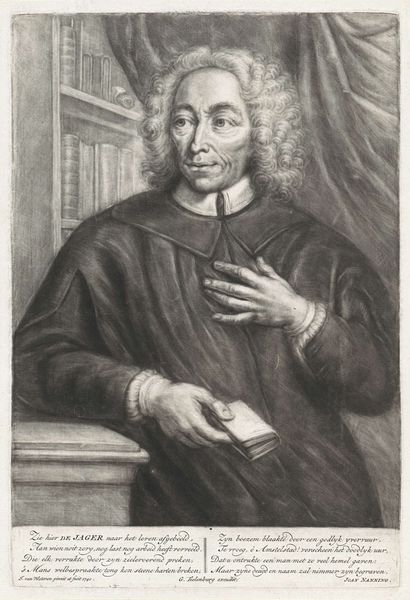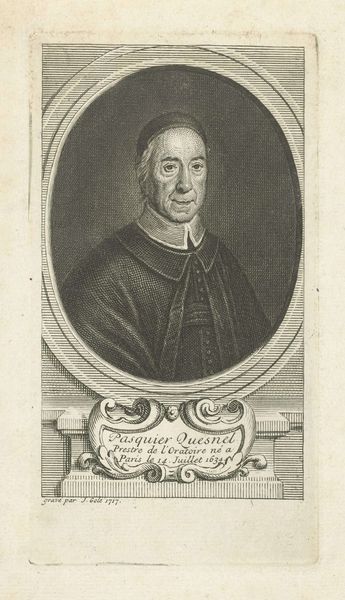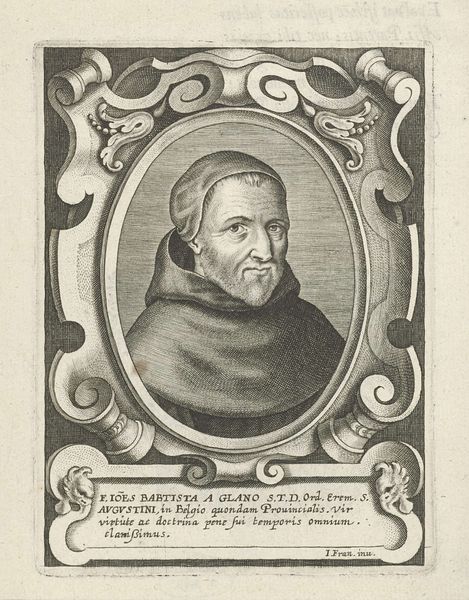
drawing, print, engraving
#
portrait
#
drawing
#
baroque
# print
#
old engraving style
#
portrait drawing
#
history-painting
#
engraving
Dimensions: height 295 mm, width 218 mm
Copyright: Rijks Museum: Open Domain
Curator: Looking at "Portret van Johannes Valck," an engraving crafted in 1661 by Reinier van Persijn, housed at the Rijksmuseum, I’m struck by how it encapsulates the visual language of the Baroque portraiture tradition. But also, how this very visual language reifies and elevates men, mostly white men, into a higher, respected place in society, as we still do today. Editor: Wow, just the intensity of the gaze from this fellow—almost feels like he's peering right into my soul. The detail in the engraving gives him such a solid, imposing presence, like he’s about to give me a lecture. Makes you wonder what kind of life he lived to have that sort of look. Curator: Knowing he was a minister sheds light on that gaze. In that era, ministers held significant social power, often seen as interpreters of moral and divine law. Editor: I see that, especially with the book so prominently displayed. The slight hand gesture suggests an act of sharing, giving lessons. Makes me imagine the weight of those expectations – the need to be constantly 'on' and performing righteousness for your community. Curator: Precisely. It's vital to examine who has been historically represented and why. Often, portraits like these reinforced societal hierarchies and religious authority. Analyzing the power dynamics embedded within them allows us to unpack the complicated historical relationship between faith, governance, and representation. Editor: Right. And the engraving itself contributes. The stark contrast of the medium gives it a kind of immutable feel. All the details—the textures, folds of his clothes, even the writing—seems designed to create a permanent record of the man and his importance, right? Curator: Exactly, engraving creates that illusion of permanence, solidifying his place in history, whilst concurrently revealing how such a concept remains fragile and ever changing. We project onto these works the contexts of our lives to interpret their worth. Editor: Seeing it that way makes me think about how our perceptions are always colored by what we bring to it, what stories we are able to relate to through the picture and beyond the literal image itself. Curator: It certainly emphasizes that art acts as a mirror reflecting not only the portrayed subject but also ourselves. Editor: Yeah, it almost invites us to consider how we each get to "engrave" our own narrative too. What story will the world remember us by, right?
Comments
No comments
Be the first to comment and join the conversation on the ultimate creative platform.
